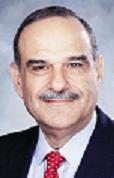N.O.’s fountain of youth ...

From CityBusiness, by Deon Roberts. Disclosure: the last paragraph contains a quote by my wife, and she is now retired from the University of New Orleans; we are living in Cincinnati:
New Orleans became a magnet to young people from across of America after Hurricane Katrina. Young adults flocked here eager to rebuild the city, and some have settled and found permanent work.
But how does New Orleans retain these young professionals over the long term?
New Orleans became a magnet to young people from across of America after Hurricane Katrina. Young adults flocked here eager to rebuild the city, and some have settled and found permanent work.
But how does New Orleans retain these young professionals over the long term?
According to an August 2007 study by the Kaiser Family Foundation, 18 percent of young adults (those ages 18-34) said they are planning on, or seriously considering, moving from the greater New Orleans area, a statistic Kaiser called “a finding of potential concern.” Among adults 35 and older, only 8 percent said they were planning on, or seriously considering, moving out the area.
Some are trying to prevent young, talented adults from leaving New Orleans. The Idea Village has launched a project it calls “504ward” to link young people with jobs and networking opportunities.
“What drives economic growth is talent,” Tim Williamson, Idea Village president, said in a CityBusiness story this week. “By engaging the business community to provide the connections or relationships, the ultimate beneficiaries will be the companies.”
According to the CityBusiness story, some young people have trouble making connections in New Orleans.
“New Orleans is a provincial place. It can be inscrutable to someone who’s just moved here,” said Jeffery Schwartz, a 26-year-old Ben Franklin High School graduate who has an urban planning degree from the University of Wisconsin and a master’s degree from the Massachusetts Institute of Technology.
Being new to the New Orleans area also plays a large role in young people’s decision to move from New Orleans, the Kaiser study said.
“A young resident who is new to the area has a predicted probability of planning to move that is four times that of an older resident who lived in New Orleans before Katrina,” Kaiser said.
An Aug. 21 article on philanthropy.com reports on the influx of young people to New Orleans since Katrina.
“Despite efforts to keep young nonprofit workers in the city, some people who moved to New Orleans after Katrina are starting to think about leaving — or have already gone,” the article said.
Since Katrina, the media seem confused about whether New Orleans is attracting or losing young people. For example, the philanthropy.com story highlights the influx of young people. But The Associated Press reported this in a grim story Dec. 15, 2006:
"New Orleans is losing an alarming number of young professionals in Katrina’s aftermath. Many doctors, lawyers, architects, engineers and other highly educated people are gone. Some left during the storm and never came back. Others came back, but soon gave up and moved out altogether."
Whether a full-blown brain drain is under way is unclear. But some suspect so, and fear the exodus will only get worse.
“They don’t see the career opportunities here that they see elsewhere,” said University of New Orleans political science professor Susan Howell.
Some are trying to prevent young, talented adults from leaving New Orleans. The Idea Village has launched a project it calls “504ward” to link young people with jobs and networking opportunities.
“What drives economic growth is talent,” Tim Williamson, Idea Village president, said in a CityBusiness story this week. “By engaging the business community to provide the connections or relationships, the ultimate beneficiaries will be the companies.”
According to the CityBusiness story, some young people have trouble making connections in New Orleans.
“New Orleans is a provincial place. It can be inscrutable to someone who’s just moved here,” said Jeffery Schwartz, a 26-year-old Ben Franklin High School graduate who has an urban planning degree from the University of Wisconsin and a master’s degree from the Massachusetts Institute of Technology.
Being new to the New Orleans area also plays a large role in young people’s decision to move from New Orleans, the Kaiser study said.
“A young resident who is new to the area has a predicted probability of planning to move that is four times that of an older resident who lived in New Orleans before Katrina,” Kaiser said.
An Aug. 21 article on philanthropy.com reports on the influx of young people to New Orleans since Katrina.
“Despite efforts to keep young nonprofit workers in the city, some people who moved to New Orleans after Katrina are starting to think about leaving — or have already gone,” the article said.
Since Katrina, the media seem confused about whether New Orleans is attracting or losing young people. For example, the philanthropy.com story highlights the influx of young people. But The Associated Press reported this in a grim story Dec. 15, 2006:
"New Orleans is losing an alarming number of young professionals in Katrina’s aftermath. Many doctors, lawyers, architects, engineers and other highly educated people are gone. Some left during the storm and never came back. Others came back, but soon gave up and moved out altogether."
Whether a full-blown brain drain is under way is unclear. But some suspect so, and fear the exodus will only get worse.
“They don’t see the career opportunities here that they see elsewhere,” said University of New Orleans political science professor Susan Howell.









